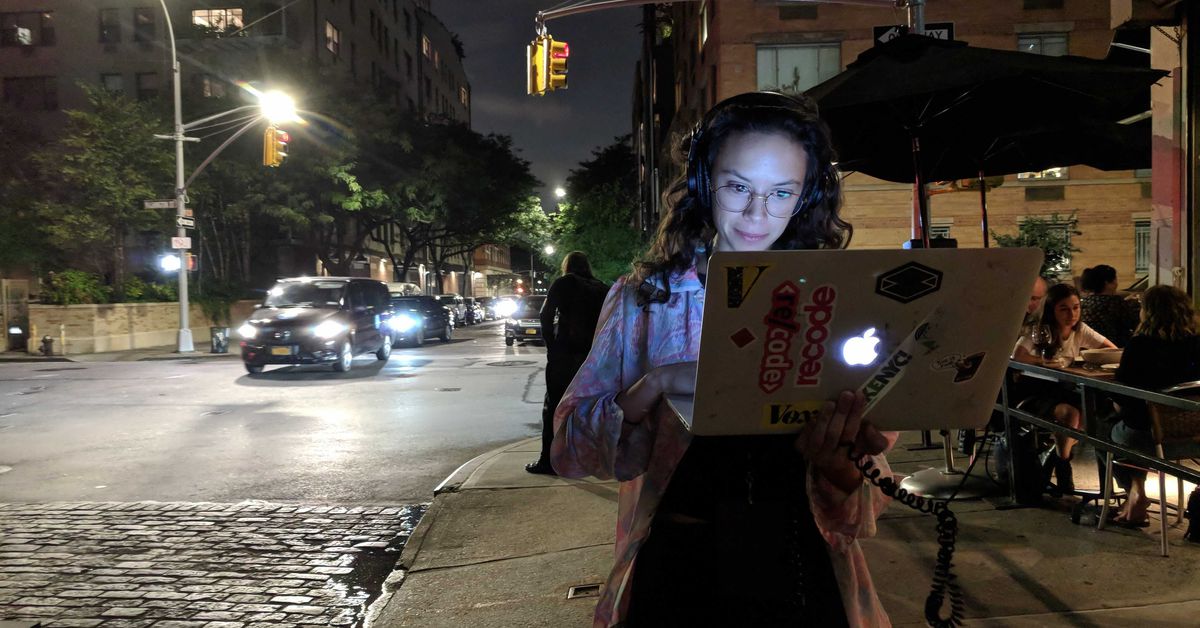Along with news, features, opinions, and tech reviews, video has become an increasingly important part of The Verge’s content. But to make great, involving videos, you’ve got to have staff with the expertise to create that video — along with the tools that allow those staff members to let their imaginations soar.
Alix Diaconis is one of the directors who helps make video magic for The Verge. We talked to Alix about what she does and what tools she uses.
Alix, what do you do for The Verge?
I’m one of the video directors for The Verge. I get to work every day with my three co-workers (but really, friends) to create the videos on The Verge’s YouTube channel. Sometimes deadlines are fast because tech and news are fast, but our team has been working together for years, so even live events feel seamless and fun. We each shoot, take photos, and edit; then the video gets treated by our sound and graphics wizards. Then bam, on to the next one!
What hardware and software tools are needed to produce a video for a site like The Verge?
It really varies video to video. For some videos, we’ll pull out all the stops, while for others, we need to do quick and light. Heck, I think we’ve shot videos with just a GoPro.
When we go to a press event, we’ll keep it very light with a monopod, lavalier microphone, and a camera we feel most comfortable with. And then I’ll edit at the event on my MacBook Pro.
But most of the time when we’re shooting on location, we’ll bring a bigger kit with an HD monitor, a slider (which helps you do tracking shots), maybe a drone. And when we’re making the big stuff, like a flagship phone review, we like to bring out everything, including a probe lens like the Venus Optics Laowa to make intro shots like this.
The opening shot on this video was created using a probe lens.
Since we’re uploading videos for our job, good internet upload speeds make life a lot easier. We also have a shared server so we have access to our terabytes and terabytes of footage at all times.
Oh, and also teamwork. Lots and lots of teamwork.
What specific hardware tools do you use for your work?
For shooting, I prefer to use the Canon EOS C200 — I think it looks really cinematic — and my preferred lens is the Canon EF 70-200mm (for B-roll at least). Sometimes I’ll use the Sony A7S II or III, which looks extra crisp, but I’m not a big fan of Sony menus. For sound, I’ll typically use a Sennheiser G3 lavalier or a Zoom H6 recorder. For photos, I use the Canon 50D.
For post-production in The Verge offices, I would edit on a 27-inch iMac, which is due for an upgrade. At home, though, I have a more powerful editing PC that my producer built for me. It has an AMD Ryzen 7 3700X 8-core processor, 2TB NVMe drive, a Radeon RX 580 series video card, 32GB RAM, and an Asus 28-inch 4K display. Of course, there are always technical issues — it’s part of editing — but the PC is the best editing machine I’ve personally owned. (Thank you, Phil!) I do miss the beautiful iMac display though.
Also, since video takes up a lot of space, I’ll sometimes use an additional SSD for projects. And as for headphones, I use the Sony MDR-7506, which are the only headphones I can wear comfortably all day.
And then there’s the fun, random gear: a GoPro Hero 8, an Insta360 panoramic video camera (which we recently used for this e-bike video), a Zhiyun Crane, a DJI Mavic Pro drone… and whatever else we can get our hands on.
This video was created using an Insta360 panoramic video camera.
What software tools do you use for your work?
All Adobe everything. Premiere Pro for editing, After Effects for basic graphics, and Photoshop for the video thumbnails. You can do a lot in Premiere, but it does have its bugs, and it’s not always optimized for Apple’s hardware.
What tools do you use for your own projects?
I’ve been teaching myself DaVinci Resolve to color footage. I still barely understand the program, but it makes footage look 100x better than coloring it in Premiere. And purely for fun, I shoot 35mm film on my dad’s old Minolta camera.
What hardware and software tools would you recommend for somebody just starting out?
Premiere is very common for editing. But if you want to try something free and you have an iPhone or iPad, there’s the Splice app. It’s really intuitive, but you’re limited to clips you have on your device. There’s also DaVinci Resolve, which is free and as advanced as most paid editing softwares.
As for cameras, just get one that you feel comfortable using! And for a computer, invest in a good one if you see yourself editing for a long time; iMacs and Windows PCs are both good, and the specs will just depend on how big your projects will be. I haven’t had a chance to use Apple’s new M1 MacBook Air or Pro yet, but both seem like good choices if you’d prefer a laptop.
This article is auto-generated by Algorithm Source: www.theverge.com


/cdn.vox-cdn.com/uploads/chorus_asset/file/19247348/brose_190930_3699_0012.jpg)
